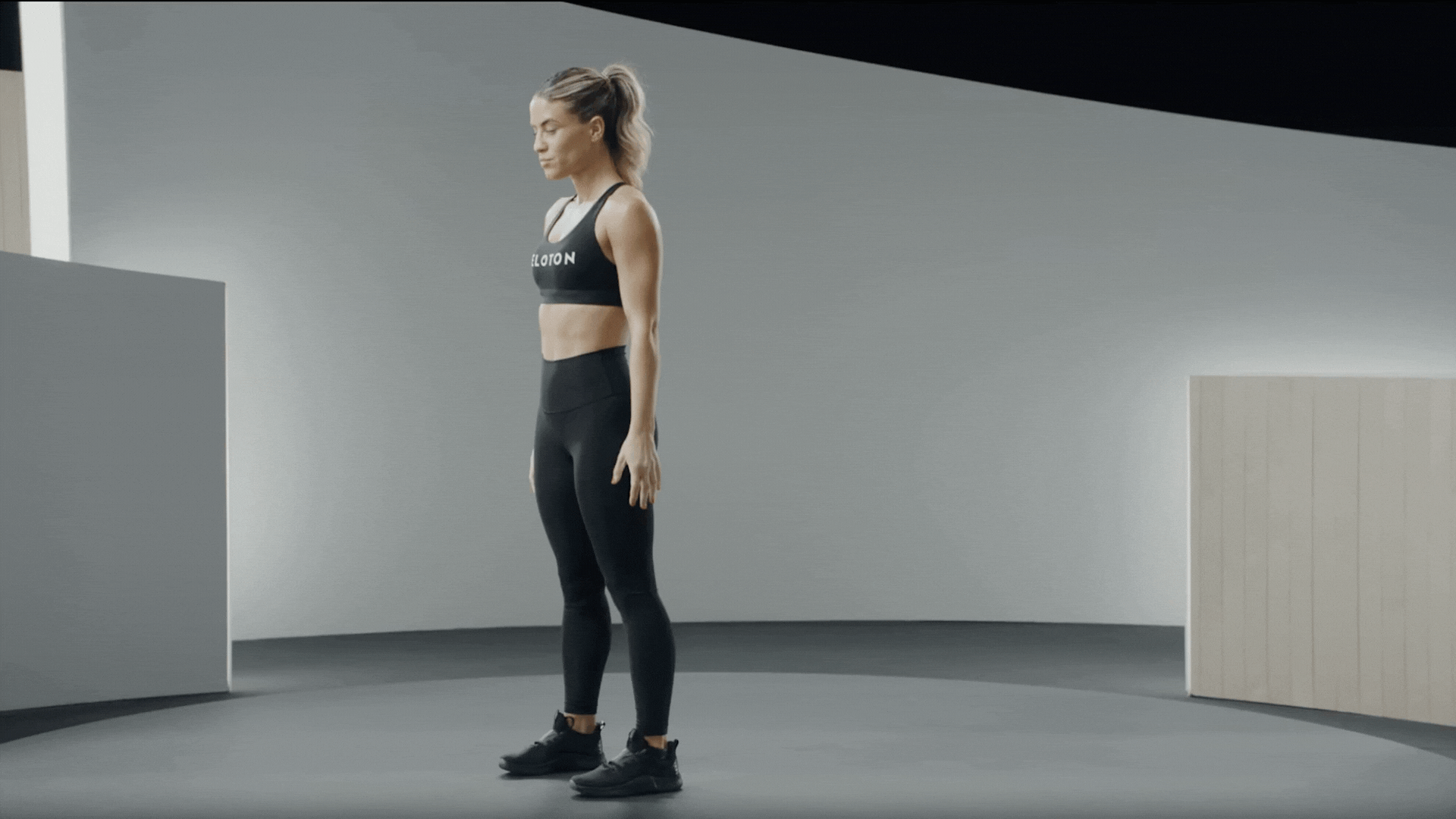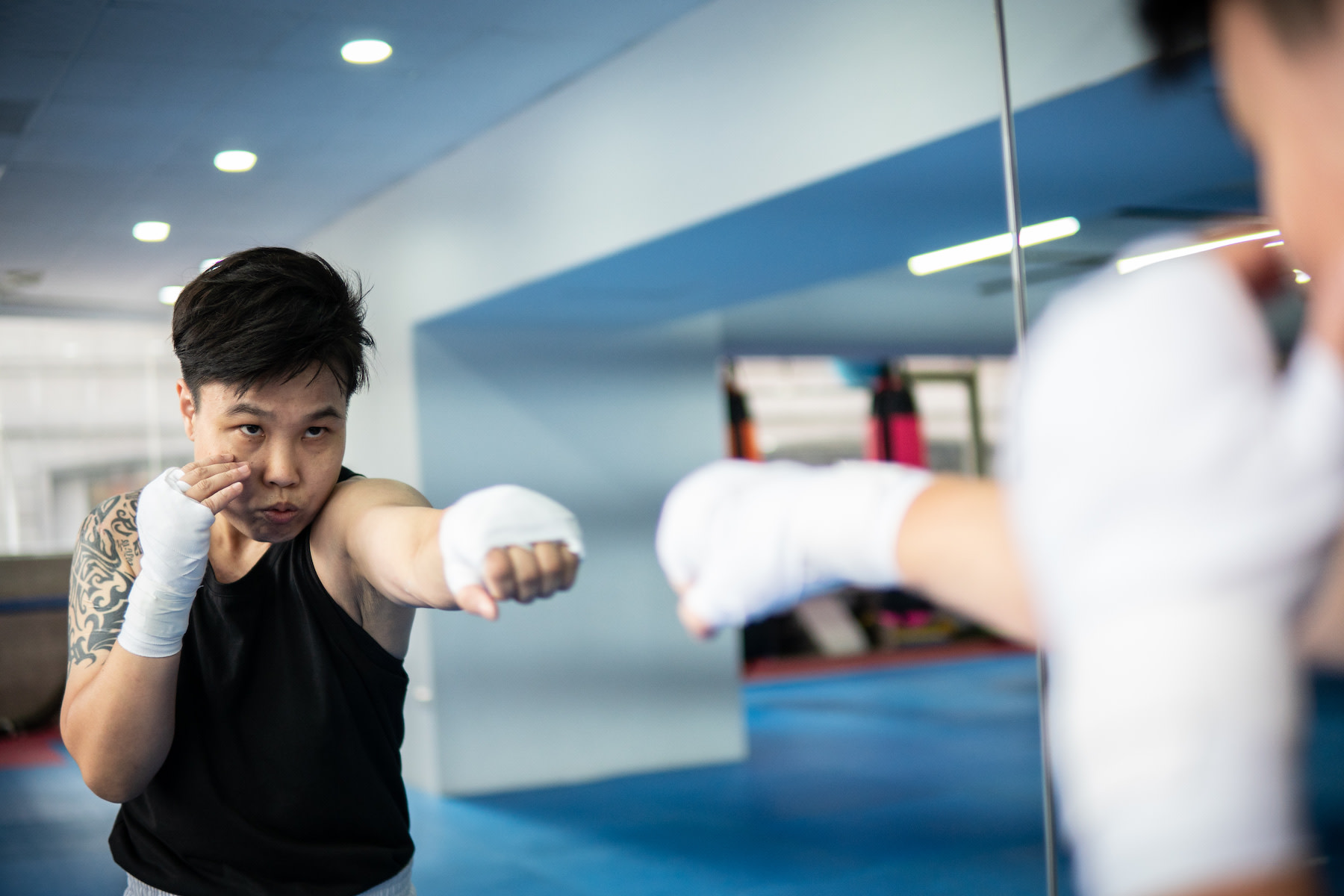
Satoshi-K/E+ via Getty Images
How to Throw a Jab, a Fundamental Punch in Boxing
It's time to nail the basics.
By Hillary Hoffower•
What Is a Jab in Boxing?
The Importance of a Proper Stance
How to Throw a Jab in Boxing
What Muscles Does a Jab Work?
Key Benefits of the Boxing Jab
Common Mistakes When Throwing a Jab
The cross and the hook may steal the spotlight as boxing’s knockout punches, but the jab is not to be underestimated. Simple but crucial, the jab lays the foundation for your workout.
“Having a really strong jab is actually really awesome in the ring,” says Peloton instructor Selena Samuela.
If you want to be a successful boxer, you need to know how to throw a jab. Here, we break down how to perfect your form, practice the punch, and integrate it into your shadowboxing routine.
What Is a Jab in Boxing?
A jab is a punch with your front hand—the first punch in boxing. It’s arguably the most important punch because it sets up all the other punches, Selena says. “It kind of sets you up to be ready,” she adds.
You can move forward, backward, and laterally with a jab. The way you move will change the purpose of the jab and dictate how you gain power. Stepping forward will generate a lot more power because you’re pushing off of that stance, Selena says, while stepping back creates more distance between you and your opponent.
The Importance of a Proper Stance
Footwork is critical in boxing. “If you have an incorrect stance, you’re going to feel it right away when throwing that first punch,” Selena says. Regardless of whether you’re boxing or shadowboxing, the stance is the same, setting you up for the right balance and power to throw a jab:
Start with your feet shoulder-width distance apart.
If you’re right-handed, step your right foot back. If you’re left-handed, step your left foot back.
Make sure your feet are staggered so that you feel stable. Putting one foot directly behind the other will leave you “walking a tightrope, and then you’ll easily throw yourself off balance,” Selena says.
The toes of your non-dominant foot should be facing 12 o’clock, while your back foot should face 2 o’clock (if you’re right-handed) or 8 o’clock (if you’re left-handed).
Keep a slight bend in your knees. Avoid locking them out. Slightly lift your heels as you shift your weight to your toes.
Now, you’re ready to throw a jab.

How to Throw a Jab in Boxing
“The jab is the most used punch in boxing for its speed and distance, which can mean an overuse injury to the shoulder or arm,” says Paul Arthur, a physical therapist at Spooner Physical Therapy in Scottsdale, Arizona. Because boxing is a fast-paced modality, it’s crucial to maintain proper form and learn the fundamentals before increasing your speed.
To properly execute a jab:
Bring your hands up to your chin. Keep your elbows tucked against your body. (If you leave your elbows pointing out, you’ll leave your ribs exposed to a potential punch.)
Form firm fists with your thumb on top. Prepare to extend the same-side hand as your front leg straight out in a punch. Keep your back fist up near your jaw.
Execute the punch. Engage your triceps to fully extend your front elbow at eye height while simultaneously rotating your wrist and knuckles. Your palm should face down, and your knuckles should face straight ahead. Aim to punch with your first two knuckles for more impact.
Rotate through your shoulders, core, and hips. Keep your feet grounded.
Return your extended fist back to your chin.
What Muscles Does a Jab Work?
The jab primarily engages your chest and shoulder muscles with support from the muscles in your neck, forearms, core, and back, Arthur says. Your main chest muscles help you generate power and stability, while your side chest muscles help protract and stabilize your shoulder blades to make the punch stronger, he adds. Those side muscles are nicknamed “the boxer muscles” for a reason.
Additionally, the front fibers in your main shoulder muscles help you bend your arm and internally rotate it, while the side fibers aid in extending your arm away from your body, Arthur says. He adds that your rotator cuff muscles provide stability to your shoulder joint, assisting with internal rotation on both the initial punch and the return.
“The internal rotation of the shoulder during a jab is important to cover the face, so be mindful of collecting your movements to prevent excess internal rotation on a jab and not overworking the shoulder,” Arthur says. “The rapid movements can also cause stress on the elbow with all the extension and flexion.”

Jasmine Lin/Moment via Getty Images
He recommends using a mirror for practice, especially if you’re struggling with the correct form. “Striking a jab to cover your own face in the mirror can help simulate proper striking height and extension of the elbow,” he says.
Engaging your lower body in this movement is just as important. “[Boxing is] about balance and being on your toes and generating power from the ground up, so your core and your torso are such crucial elements to the sport,” Selena says.
Exploding off your back leg can lend more power to your jab—and adding weight can provide extra resistance. However, if you do choose to incorporate dumbbells into your jab, make sure to keep things light by limiting them to three pounds maximum. You should also be confident in your stance before bringing dumbbells into the mix, Selena says. “If you’re throwing punches with incorrect form, you can easily end up injuring your wrists,” she cautions.
Related Articles

Cardio
6 Ways Boxing Workouts Benefit Your Mental and Physical Health

Strength Train
Target Your Triceps with This Key Move for Powerful Arms

Strength Train
Want to Strengthen Your Shoulders? Grab Your Dumbbells—and Try These 5 Exercises

Cardio
No, You Don't Need a Punching Bag to Box. Get Hooked on Shadowboxing
Key Benefits of the Boxing Jab
While a jab is a proactive boxing move that creates openings for more powerful punches (and for probing your opponent’s position if you’re actually in the ring), it’s about more than just asserting control. This punch involves movement from your feet all the way up to your arms, which Arthur says helps improve your overall coordination.
As a sport, boxing benefits your overall physical health. A 2023 case study published in the International Journal of Fitness Education found that a three-week shadowboxing program practiced by previously sedentary participants increased their aerobic capacity, muscle mass, and bone mass, as well as decreased their resting heart rate, fat mass, and body fat percentages.
Plus, shadowboxing is easy to tailor to your individual needs. “It can be adjusted to a steady-state aerobic program to improve fat loss and increase endurance, or a high-intensity anaerobic time under tension program that can further increase the metabolic response,” Arthur says.
Aerobic exercise may also improve your self-esteem, anxiety, and insomnia, according to a 2019 study published in Health Psychology Research. Experts say shadowboxing often helps improve your mental health because it provides an escape, releases endorphins, and lets you channel stress into power.
Common Mistakes When Throwing a Jab
Before you start throwing this critical punch, avoid making these common mistakes.
Protect Your Face
Selena often sees people drop their backhands to throw a jab, leaving them exposed to their real or imaginary opponent. When you’re throwing a jab, keep the hand that's not punching next to your chin to protect your face.
Be Mindful of Your Positioning
Rather than stepping forward with a jab, some people lunge forward, inadvertently lifting their chin up in the process. “It’s almost like you’re asking your opponent to punch you in the face,” Selena says. Make sure you keep your chin down, and your eyes up, even if you’re simulating the fight experience. As she puts it, “stay ready.” You’re in the real (or imaginary) ring, after all.
This content is for informational and educational purposes only and does not constitute individualized advice. It is not intended to replace professional medical evaluation, diagnosis, or treatment. Seek the advice of your physician for questions you may have regarding your health or a medical condition. If you are having a medical emergency, call your physician or 911 immediately.
Level up your cardio workouts
Enter your email to get articles, instructor tips, and updates from Peloton sent to your inbox.
By providing your email address, you agree to receive marketing communications from Peloton.
For more about how we use your information, see our Privacy Policy.






